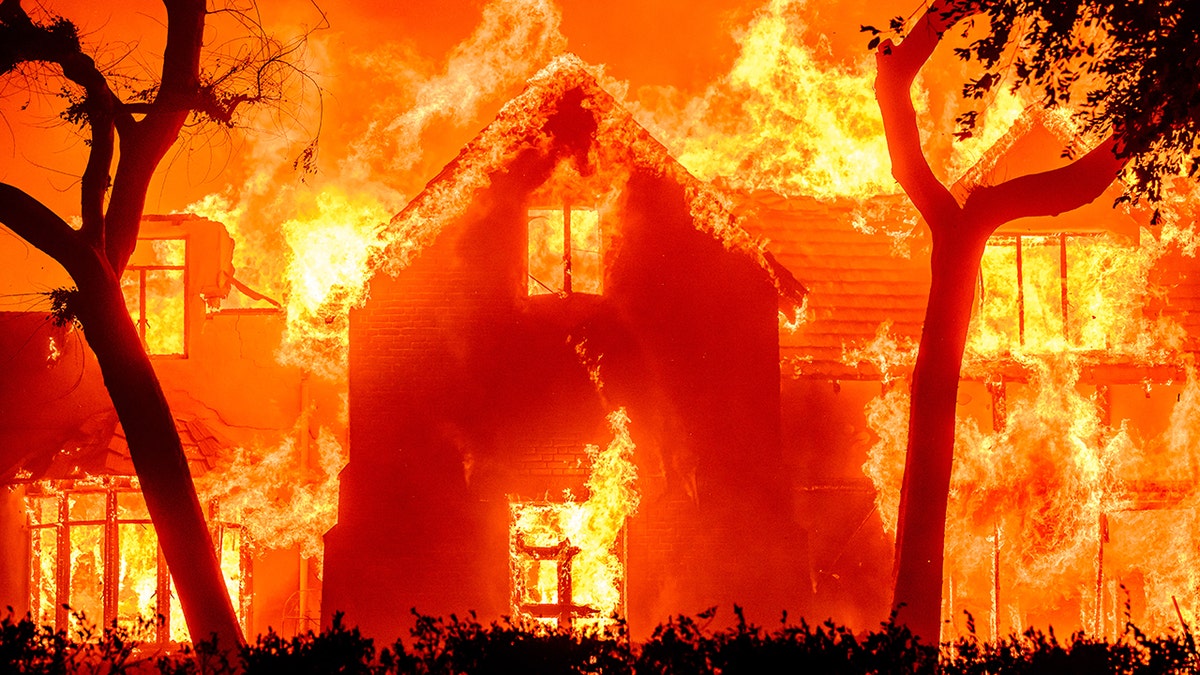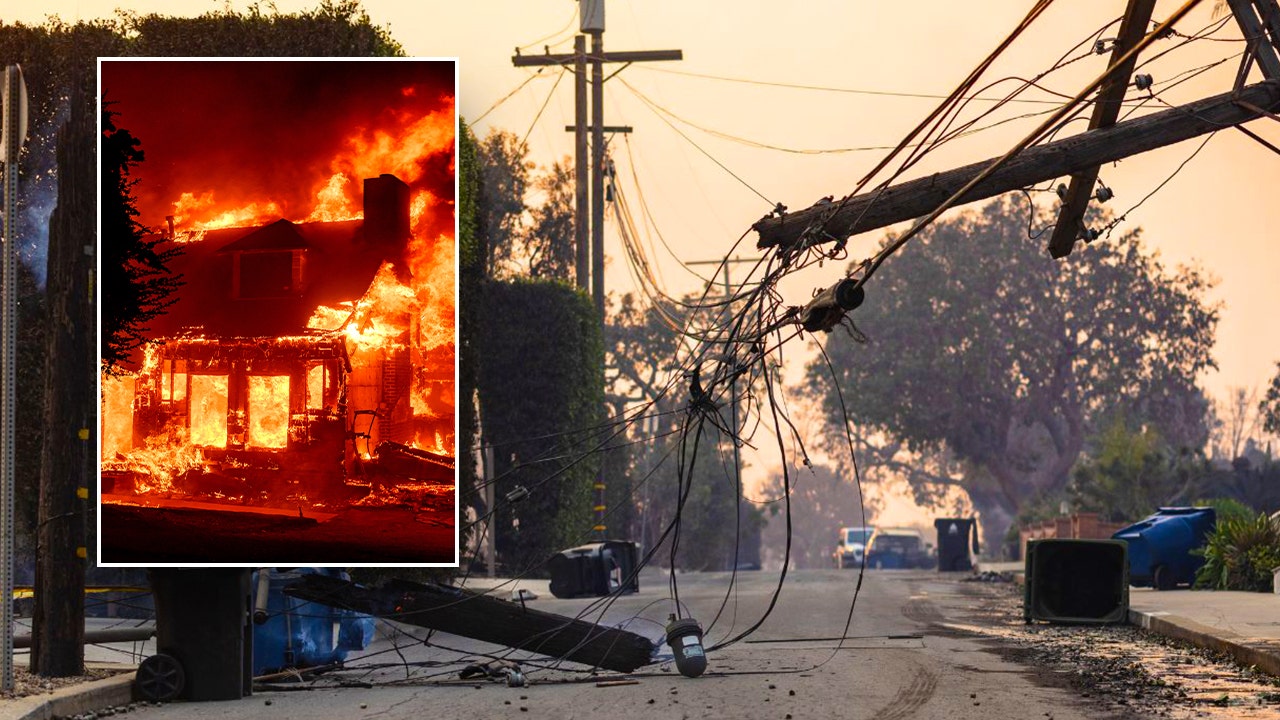A company that monitors electrical activity says faults along the Los Angeles power grid skyrocketed in the same areas where three of this week’s major wildfires are currently raging.
Bob Marshall, the chief executive of Whisker Labs, told Fox News Digital that the company recorded sharp increases in faults in the hours prior to the Eaton, Palisades and Hurst Fires.
Marshall said that his company has a network of around 14,000 sensors known as “ting” sensors across Los Angeles that can pinpoint and identify faults generated by electrical arcs. Through its network of sensors in homes, Whisker Labs is able to monitor the electric utility grid with “extraordinary precision and accuracy.”
ESSENTIAL PHONE NUMBERS FOR LOS ANGELES-AREA RESIDENTS AND HOW YOU CAN HELP THEM
DISTRAUGHT LA MOM CONFRONTS NEWSOM OVER FLAILING WILDFIRE RESPONSE
“Faults are caused by tree limbs touching wires or wires blowing in the wind and touching. That creates a spark in a fault, and we detect all of those things,” Marshall explained.
Other causes include faulty electric equipment igniting, a sudden surge in demand or earthquake tremors. At the time the fires ignited, intense Santa Ana winds were blowing across Los Angeles.
The company’s data, which was shared with Fox News Digital, is startling.
In the Palisades area, the largest of the fires currently raging, there were 63 faults in the two to three hours prior to the ignition of the fire, Marshall said. There were 18 faults registered in the hour it began on Tuesday.
The blaze has so far torched 12,300 homes and buildings across the area. Across the county, the death toll has risen to 11 people, and authorities anticipate that number rising.
“In the case of the Eaton Fire near Altadena, there’s 317 grid faults that occurred in the hours preceding the ignition,” Marshall said. “And then in the Hurst Fire, there’s about 230 faults that occurred that we measured on the sensor network.”
He said on a typical day there are very few faults.

LA FIRE SOUNDED ALARM ON BUDGET CUTS IMPACTING WILDFIRE RESPONSE: MEMO
Sparks from faults can fall to the ground and ignite vegetation, essentially setting a match on the landscape. High winds then carry the flames at rapid speeds.
Investigators have yet to determine what sparked the raging wildfires that have decimated large areas of Los Angeles, but a jump in faults on the power grid may serve as vital clues.
“Importantly, what we cannot say is one of those is whether one of those faults caused the fire. We don’t know that,” Marshall said. “What we know from our data is that there were increasing faults in the grid in the area around where those fires ignited.”
He said the data shows that the power was not shut off immediately when the faults were rising.
“But again, we can’t say definitively at all whether one of those faults caused a fire. I do want to be very, very clear about that,” he added.
Marshall said that Whisker Labs has had discussions with utility companies about using its data, but currently, the data is not being shared.
Right now, ting sensors notify homeowners of a surge in power so they can take preventative measures to prevent house fires. Marshall said the company has a network of about one million ting sensors across the U.S.
“A power surge can cause damage to appliances and devices. In the worst case, it can cause a fire in a home,” Marshall said.
He said the “smart and super sophisticated” technology can prevent 80% of potential house fires.

When the sensor picks up a fault, the home sensor is notified via an app, and then they can arrange for an electrician to call and make the necessary fixes.
“We take 30 million electrical measurements every second. There’s AI (artificial intelligence) in the sensor, [and] we stream data to a cloud that is specifically designed to detect electrical faults inside of homes,” he continued. “And then the network of sensors detects faults on the grid because when there’s a fault on the grid it is simultaneously measured by many ting sensors in a community. So if there’s a fault in your home, that fault doesn’t propagate out to the whole community, we only detect it on one single thing sensor in your home.”
Meanwhile, the Los Angeles Department of Water and Power didn’t proactively turn off the power to mitigate the risk of starting a fire ahead of this week’s devastating wildfires, The Wall Street Journal reported Friday, citing regulatory filings.
The preventative measure is in place with every other big California power company after utilities have sparked wildfires in the past, the Journal reported.
An LADWP spokesperson told the Journal that they have other safety precautions in place, such as disabling technology that automatically restores power after an outage. She added that widespread preventative power outages could also be harmful to emergency services.
Fox News’ Brie Stimson contributed to this report.
Read the full article here


